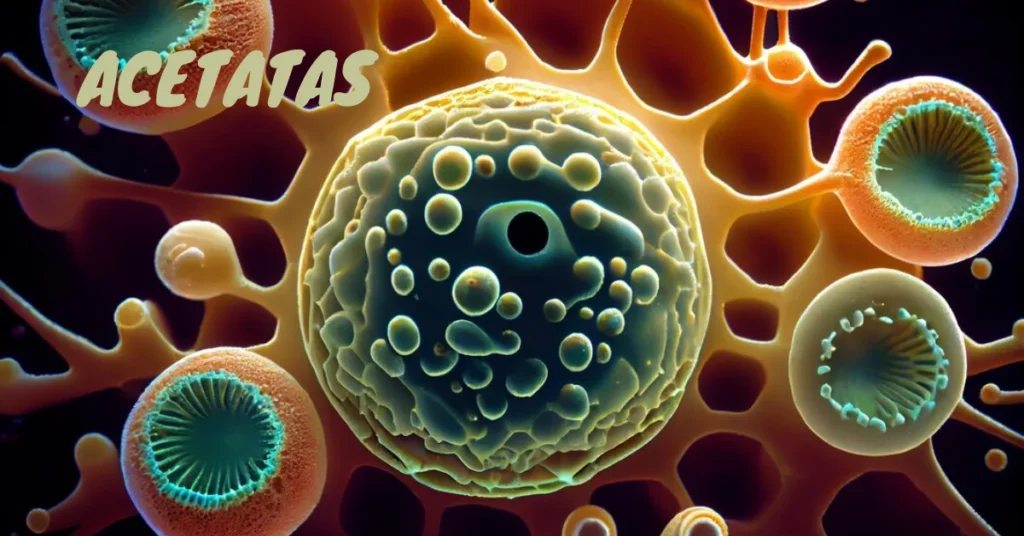Welcome to the fascinating world of acetates – versatile compounds with a wide range of applications! From industries to everyday products, acetates play a vital role in our lives. Join us as we dive into the acetatas chemistry and applications, uses, production methods, advantages, and emerging trends of acetates. Let’s unravel the mysteries and potentials of these compounds together!
What are acetates?
Acetates are a diverse group of compounds that contain the acetate ion, comprised of carbon, hydrogen, and oxygen atoms. These ions have a negative charge and play crucial roles in various chemical processes. The acetate ion is commonly represented as CH3COO- or C2H3O2-.
In chemistry, acetates can refer to salts or esters derived from acetic acid. Acetates exhibit unique properties that make them valuable in both industrial and academic settings. Their versatility allows for a wide range of applications across different fields.
From textiles to pharmaceuticals, acetates find their way into numerous products we use daily. They contribute to the characteristics of materials such as fabrics and plastics, enhancing performance and functionality.
Understanding the composition and structure of acetates opens up endless possibilities for innovation and development in multiple industries.
The chemical composition and structure of acetates
Acetates, also known as ethanoates, are chemical compounds derived from acetic acid. They consist of an acetate ion (CH3COO-) combined with a metal cation to form a salt. The structure of acetates is simple yet versatile, allowing them to be easily incorporated into various products and processes.
The chemical composition of acetates plays a crucial role in their properties and applications. The presence of the acetate group gives these compounds their characteristic odor and taste, making them useful in flavoring agents and fragrances. Additionally, acetates exhibit solubility in water and organic solvents, enhancing their versatility in different industries.
In terms of structure, acetates typically have a linear molecular arrangement with the central carbon atom bound to oxygen atoms on one side and hydrogen atoms on the other. This configuration contributes to the stability and reactivity of acetates when interacting with other substances.
Understanding the chemical composition and structure of acetates is essential for harnessing their potential across various fields.
Common uses of acetates in industries and everyday life
Acetates play a vital role in various industries and everyday life due to their versatility and properties. In the textile industry, acetate fabrics are widely used for making clothing, linings, and upholstery due to their softness and draping qualities. Acetates also find applications in the pharmaceutical industry as a coating for tablets or as an ingredient in certain medications.
In the food industry, acetates are commonly used as preservatives or flavor enhancers in processed foods like cheese, bread, and beverages. Moreover, acetate-based plastics are utilized in packaging materials that offer excellent barrier properties against moisture and oxygen.
Furthermore, acetates serve as solvents in different industries such as paints and coatings manufacturing. They help dissolve other substances easily while providing stability to the final product. Additionally, acetates are used in personal care products like nail polish removers for their efficient solvent properties.
The diverse uses of acetates demonstrate their significance across multiple sectors contributing to enhancing our daily lives and various industrial processes.
How are acetates made?
Acetates are commonly produced through a chemical reaction between acetic acid and an alcohol, typically methanol or ethanol. This process, known as esterification, involves the combination of these two compounds with the help of a catalyst to form the acetate ester. The reaction can take place under various conditions such as refluxing and heating to drive it forward.
Once the ester is formed, it undergoes purification processes like distillation to separate it from any remaining reactants or by-products. The purity of the acetate is crucial for its intended application in industries ranging from textiles to pharmaceuticals.
In some cases, acetates can also be derived from cellulose fibers through a process called acetylation. This method yields cellulose acetate, which finds applications in producing films, fibers, and plastics due to its unique properties.
The production of acetates involves intricate chemical reactions that require precise control and expertise to ensure high-quality output for various uses across different sectors.
Advantages and disadvantages of using acetates
When it comes to the advantages of using acetates, one major benefit is their versatility. Acetates can be easily modified and tailored for various applications in industries such as textiles, pharmaceuticals, and food packaging. They are also known for their good solubility in many solvents, making them ideal for use in different formulations.
Another advantage of acetates is their biodegradability. Unlike some synthetic materials, acetates break down naturally over time, reducing environmental impact. Additionally, acetates are relatively cost-effective compared to other alternatives, which makes them a preferred choice for manufacturers looking to balance performance with affordability.
On the flip side, one disadvantage of using acetates is that they can be prone to wrinkling and shrinking when exposed to heat or moisture. This limitation may restrict certain applications where durability is crucial. Furthermore, some types of acetates are flammable under specific conditions, requiring careful handling and storage procedures to ensure safety.
Despite these drawbacks, continuous research and innovation in the field of chemistry are leading to advancements that address these limitations while unlocking new possibilities for acetate-based products across various industries.
Emerging applications of acetates in various fields
Acetates, with their versatile properties, are making waves in various fields beyond traditional uses. In the textile industry, acetates are being increasingly used as a sustainable alternative to synthetic fibers. Their soft texture and drape make them ideal for creating luxurious fabrics for clothing and home furnishings.
In the pharmaceutical sector, acetates play a crucial role in drug formulation due to their solubility and compatibility with active ingredients. This has led to innovative developments in controlled-release medications and transdermal patches that deliver drugs effectively.
Moreover, acetates are gaining traction in the food packaging industry for their barrier properties that help extend the shelf life of perishable goods. Biodegradable acetate-based materials are also being explored as eco-friendly alternatives to conventional plastics, contributing to environmental sustainability efforts.
As research continues to uncover new possibilities for acetates, we can expect to see further advancements across industries ranging from electronics to agriculture. The future looks promising as acetates pave the way for innovative solutions addressing diverse challenges faced by society today.
Conclusion: the future potential of acetates and their impact on society
Acetates have proven to be versatile compounds with a wide range of applications across various industries and in everyday life. As technology advances, new opportunities for the use of acetates continue to emerge, showcasing their potential impact on society. From textiles and pharmaceuticals to food packaging and construction materials, acetates play a crucial role in enhancing product performance and sustainability.
With ongoing research and development efforts focused on maximizing the benefits of acetates while minimizing environmental impacts, the future looks promising for these compounds. As sustainable practices become increasingly important in today’s world, acetates offer a viable solution due to their biodegradability and recyclability.
As we look ahead, it is clear that acetates will continue to shape the way we approach manufacturing processes, product design, and environmental conservation. By harnessing the full potential of acetates through innovation and collaboration, we can create a more sustainable future for generations to come.
FAQs
Q:What are acetatas commonly used for?
Ans.Acetatas, also known as acetates, find broad application across industries such as pharmaceuticals, textiles, and manufacturing due to their versatile chemical properties.
Q:Why are acetatas important in industry?
Ans.Acetatas are crucial because they contribute to processes like drug formulation, fabric dyeing, and chemical synthesis, highlighting their significance in diverse industrial applications.
Q:How do acetatas impact consumers?
Ans.Consumers benefit from acetatas through improved pharmaceutical formulations, durable textiles, and innovative products, enhancing everyday quality of life.
Q:What should professionals understand about acetatas?
Ans.Professionals should grasp acetatas’ chemistry, varied applications, and potential environmental and health implications to make informed decisions in their respective fields.
Q:Are acetatas safe for use in consumer products?
Ans.Yes, acetatas undergo rigorous testing to ensure safety in consumer goods, meeting regulatory standards for quality and performance across industries.







